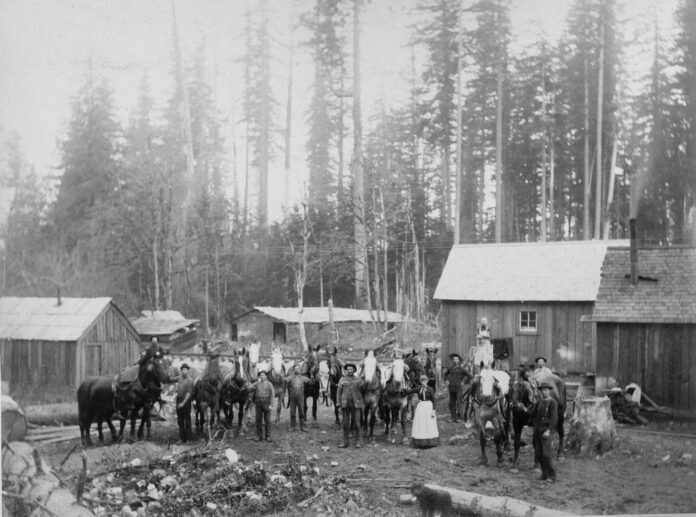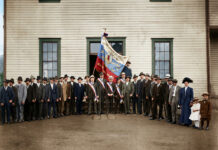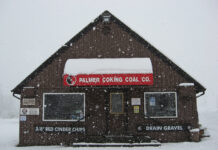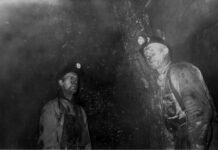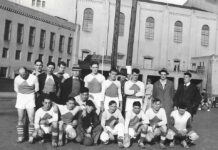If you mention the name Veazie, many Enumclaw locals will instinctively reply Cumberland for the Veazie-Cumberland Road that starts near the King County Fairground then continues north through Cumberland, Kanaskat, and Palmer, on its way to either Ravensdale or Selleck. However as to exactly where Veazie is, one can safely reply, “There’s no there, there,” as Gertrude Stein famously claimed about her hometown of Oakland, California.
Veazie was named for Tom Veazie, a logger who helped form Veazie & Russell Logging Company. His partner, John Russell was its first Postmaster. The earliest homesteaders included Frederick Krause, Antone Anicich, Otto Tamm, Robert M. Forest, Issac Wilson, Gustav Buckhorn, John Standridge, John Geareux, and Joseph Fell Sr., for whom both Fell Hill and Fell Street were named. He was also Mary (Fell) Stevenson’s father.
This image of nine men and a woman posing for the camera was at the Veazie & Russell’s logging camp. They stand amidst seven teams of horses used to pull turns of logs to the rail siding where they were subsequently loaded onto rail cars. One man and the woman wear aprons. This circa 1890 photo #1986.11.1.8 by Edward A. Sather comes courtesy of the Washington State Historical Society, whose Tacoma museum is open 10 a.m. to 5 p.m. Tuesday through Sunday.
Before Enumclaw was chosen as the Northern Pacific Railroad station in 1885, there were Veazie and Birch; two railway sidings built about 1884 further north. However, Enumclaw was granted the coveted station and grew prosperous after that. The town was founded by Frank and Mary Stevenson, for which Charlie Lee suggested the Native American name. That same year, Enumclaw’s Chinese population swelled to 90, all employed by railroad contractors, but destined to move to where the next rail line was laid.
Today, the Burlington Northern & Sante Fe Railroad (successor to Northern Pacific) has been abandoned south of the 400th block, near Fell Hill. Yet, the railroad occasionally stores excess rail cars along the still active portion of the line that runs through Cumberland. The location of the abandoned rail bed, built of rock several feet above the valley floor, can still be seen making its way south toward Enumclaw.
Veazie and Birch comprised the north and south halves of the Coal Creek District, named for the stream that historically combined with Newaukum Creek to create a marsh-filled valley. Early farmers diverted Coal Creek north into Fish Lake creating a valley floor comprised of rich soils perfect for crops, pastures, and dairy cows. The old Coal Creek Road, a portion of which is now 278th Way S.E., preceded the Veazie-Cumberland Road in connecting Enumclaw to Cumberland and Bayne.
Birch became the more thriving of the two settlements after homesteaders formed high hopes that it would be chosen as the rail station. Birch boasted a post office, a saloon, blacksmith shop, school, and the general merchandise store of Hochstrasser & Keller. However, with Enumclaw’s selection as the railroad depot, Birch slowly faded in importance. By 1900, the village was deserted and in Sept. 1905, Birch students began attending the nearby Veazie School.
Still, a little piece of Birch lives on in Enumclaw. Members of the Danish Brotherhood dismantled the store in 1901. They hired Anton Johansen’s wagon to move the salvaged material to Enumclaw. That lumber was used to build Danish Hall, which still stands at the corner of Porter Street and Myrtle Ave.
Next week, more about Veazie, and the new school its town folks built in the summer of 1905.

